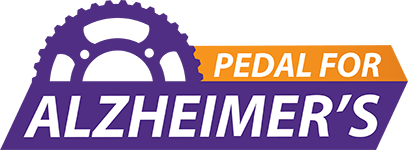Tips for Coping with Sundowning
When you hear the term sundowning, you often understand what it means as caregivers almost everywhere use it. You’ve heard about the person with dementia becoming increasingly confused as the day comes to an end with noticeable behavioral changes, including increased agitation and yelling.
Sundowning syndrome is not a disease itself; however, there is enough evidence to suggest that this phenomenon does exist in some individuals with dementia. Approximately 66% of older adults with dementia have sundowning syndrome.
Healthcare costs for Alzheimer’s are rising, and most of the costs come from the care and management of neuropsychiatric symptoms. Developing effective treatments for night-time agitation is difficult because a concrete understanding of where the symptoms originated is minimal.
This agitation and behavioral disturbances late in the day have also been associated with faster cognitive decline, increased falls, institutionalization, and, unfortunately, caregiver burden.
Having a solid understanding of this syndrome, ways to prevent an episode, and what to do when one is already happening are all things this post will review.
What is sundowning?
While it is not an actual disease, sundowning is a term used to define a group of symptoms that people with Alzheimer’s and other dementias may experience.
The term sundowning is appropriate because most individuals with these symptoms seem to experience them at full force when the sun begins to set. It helps to understand that a person can have these behaviors at any time of the day, and it doesn’t mean they will never experience them in the morning or around lunchtime.
Behavioral symptoms of sundown syndrome include confusion, aggression, anxiety, pacing, roaming, screaming, or refusing to follow directions. These behaviors typically begin as the sun starts to set and can last well into the night, disrupting the person’s sleep.
Symptoms of sundown syndrome
The symptoms of sundown syndrome will be most noticeable at night as the sun begins to set. The syndrome is most likely to affect a person with dementia in the areas of their thinking ability, personality changes, ability to reason, and noticeable changes in their behavior.
While each person will respond to this syndrome differently, some common symptoms include the following:
- Pacing
- Restlessness
- Increase in anxiety
- Increase aggression
- Crying for no reason
- Wandering around aimlessly
- In some cases, paranoia and hallucinations, or delusions
It’s hard to say if sundowning is permanent since there isn’t a firm diagnosis or definitive reason for the symptoms that come with it. Understanding what triggers the syndrome and what aggravates it helps to cope better when faced with it and sometimes even prevent it.
Alzheimer’s sundowning tips
When the signs of sundowning start to happen, it can be scary and overwhelming for the family helping to care for their loved one. Try to remain calm and remember that the other person can often feel your tension and respond with an increase in agitation.
You can prepare yourself by noting the times of the day you start to see the symptoms coming about. Be mindful of the events leading up to the symptoms. Some questions to think about are:
- When did the activities of the day finish?
- Did they get too much stimulation or not enough?
- Was there a lot of action happening around them?
- Did they get enough food and drink during the day?
- What were the interactions like between other people?
- Were there any new medications added to their regimen?
You can decrease the frequency and intensity when you think about the things that often trigger the symptoms. Listen to the person as calmly as possible and help them understand that it is ok and you are there to support them.
The National Institute on Aging suggests trying these measures as well:
- Reduce noise and visitors
- Use distraction if they are becoming upset
- Space activities out rather than doing a lot in one day
- Don’t give the person caffeinated beverages late in the day
- Have a routine for early evenings with soft music and lighting
- Get enough rest at night, and keep daytime naps short and early
- Increase exposure to light, even if that means sitting by a window
There seems to be a disruption in the circadian rhythm of people experiencing sundowning symptoms. Circadian rhythm is the cycle of physical, mental, and behavioral changes that our bodies undergo in a 24-hour cycle.
An earlier study shows that more activities that involve light exposure during the day will help to reduce this circadian rhythm disruption. These findings support that early-day activities involving the outdoors and sun exposure will significantly help to ease night-time sleep disruptions.
Why does sundowning occur
At this time, the cause of sundown syndrome in a person with dementia is unknown. Many theories give reasonable explanations, and some even suggest that certain situations may exaggerate the symptoms or make them worse. There is also a theory that how we respond to them while they exhibit these symptoms can make the signs worse and more intense.
According to the National Institute on Aging, one possible reason for this syndrome is that changes in the brain with Alzheimer’s can affect that person’s “biological clock,” leading to confusion in their sleep-wake cycles.
Other suggestions for this syndrome include:
- Side effects of prescription medications
- Lack of sleep or being overly tired
- Lack of exposure to daytime light
- Daytime overstimulation
- Unmet physical needs
- Caregiver fatigue
- Depression
- Pain
Sundowning can be a challenging aspect of Alzheimer’s dementia to experience for both the person with the disease and their caregivers. The caregiver burnout that can happen with this syndrome can increase and intensify as the disease progresses.
Understanding how to cope with the syndrome’s stressors will help keep your loved one with Alzheimer’s dementia home with you and happier in the long run.
Key Takeaways
- Sundowning syndrome is a term used for a particular group of symptoms that occur during the late evening hours.
- Behavioral changes are usually associated with these symptoms, which range in intensity.
- There is a noticeable change in the patient with Alzheimer’s circadian rhythm, possibly due to damage in the brain’s pathways with the disease.
- Increasing exposure to light during the day and keeping evening routines simple are great measures for coping with the symptoms.
Resources
Merck Manual. Behavioral and Psychologic Symptoms of Dementia. https://www.merckmanuals.com/professional/neurologic-disorders/delirium-and-dementia/behavioral-and-psychologic-symptoms-of-dementia?query=sundowning
Cleveland Clinic. Sundown Syndrome. https://my.clevelandclinic.org/health/articles/22840-sundown-syndrome
National Institute on Aging. Tips for coping with Sundowning. https://www.nia.nih.gov/health/tips-coping-sundowning
Nighttime Agitation and Restless Legs Syndrome in Persons With Alzheimer’s Disease: Study Protocol for a Double-Blind, Placebo-Controlled, Randomized Trial (NightRest). Research in gerontological nursing.
Field measurements of light exposures and circadian disruption in two populations of older adults. Journal of Alzheimer’s Disease.http://europepmc.org/article/MED/22699845#impact

Courtney Battaglia is a registered nurse with a bachelor’s degree from the University of Texas at Arlington. She has over 12 years of experience working directly with patients, many of whom experienced the effects of Alzheimer’s and dementia. Courtney is dedicated to providing resources for families and patients who are experiencing this diagnosis and continues to advocate daily for this population.
By combining her nursing knowledge with her passion for writing, Courtney strives to arm the public with the most accurate information for their health-related questions. While maintaining an active presence in delivering exceptional patient care, Courtney continues to promote and foster education to the public by breaking down recent research and news trends into easy-to-understand information.

